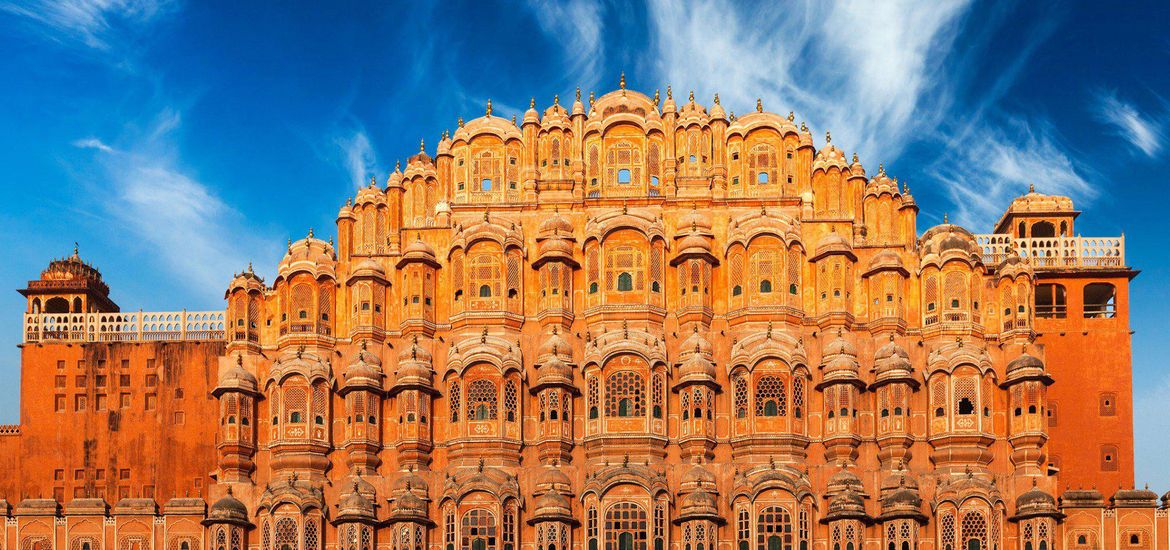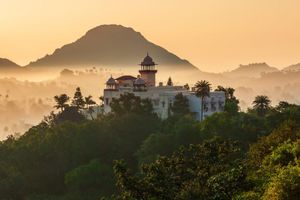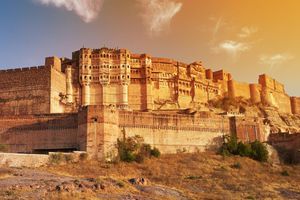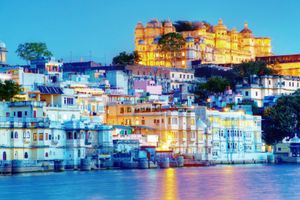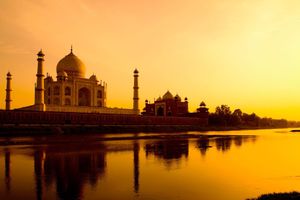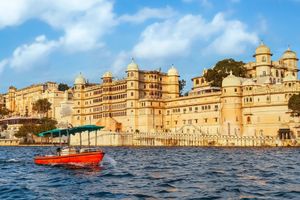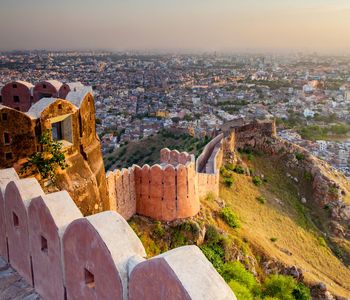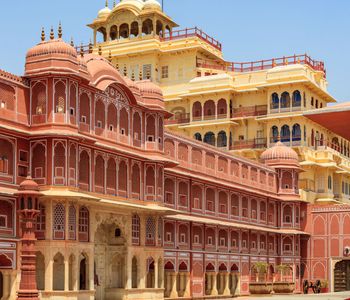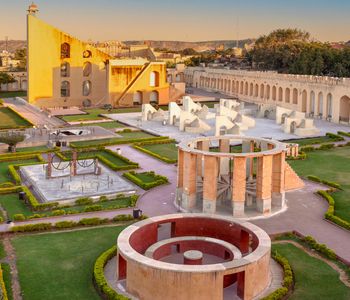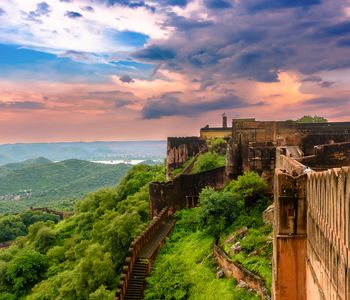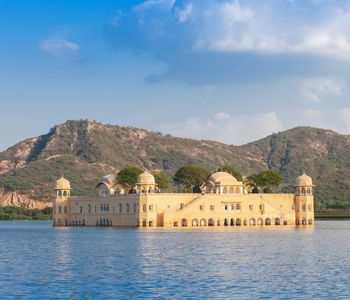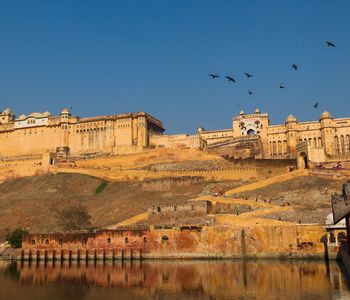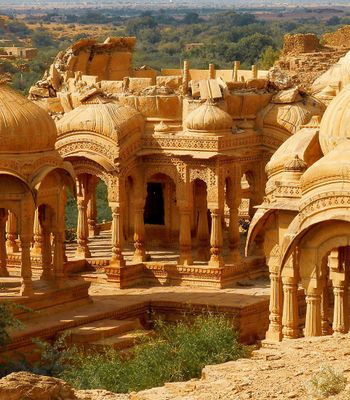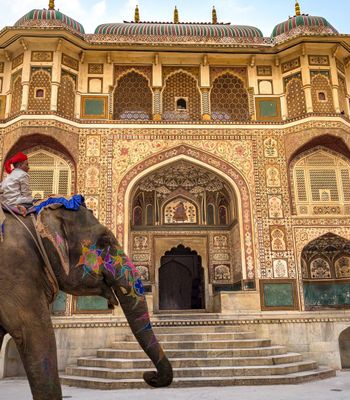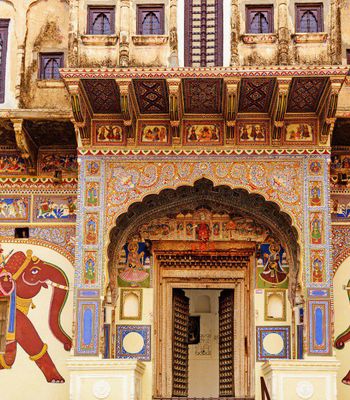As you travel through Jaipur's bustling streets, the sight of Hawa Mahal—the "Palace of Winds"—is difficult to miss. Built in 1799 during the reign of Maharaja Sawai Pratap Singh, the palace combines Rajput and Mughal architectural elements.
Its unique, lattice-like façade with 953 small windows (jharokhas) was designed to allow royal women to observe daily life on the streets without being noticed. The honeycomb-like pattern exemplifies the period's ingenuity and majesty.
A Symphony in Pink: The History Behind Hawa Mahal
Maharaja Sawai Pratap Singh commissioned the construction of the Hawa Mahal in 1799 as an expansion of the City Palace. The design was created by master architect Lal Chand Ustad, who drew inspiration from the crown of Krishna, the city’s patron deity.
Built to allow royal women following the purdah system to observe street life without being seen, Hawa Mahal doesn't have a direct entrance from the street. Visitors are to enter through a side passage from the City Palace.
Hawa Mahal's Architectural Marvel: An Oasis of Elegance
Constructed from pink sandstone, the palace features a stunning five-storey structure. Its intricately carved windows create the building’s distinctive honeycomb look.
Key architectural highlights include:
- Intricate Jharokhas: The latticework of these jharokhas serves a practical purpose: they create a constant, refreshing breeze that circulates throughout the palace, keeping the royal women cool in the hot Rajasthani climate.
- Delicate Arches and Pillars: The fusion of Rajput and Mughal architectural styles is evident in every corner of Hawa Mahal, from the detailed arches and intricate carvings to the majestic pillars.
- Central Courtyard: A peaceful space that offers a striking view of Jaipur and gives visitors a chance to appreciate the palace’s magnificence.
- A Veil of Windows: Despite being adorned with hundreds of windows, each one is no larger than a peephole. This clever design allowed the royal ladies to watch the streets below while remaining completely hidden from view.
Hidden Secrets of Hawa Mahal: Exploring its Lesser-Known Gems
There are many interesting locations within the palace that make it very tempting for the visitors to explore. Some of them include:
Sharad Mandir
Sharad Mandir is on the first floor of Hawa Mahal. Largely used for celebrations during the autumn season, the royal family enjoyed several festivals and gatherings here. The floor has open spaces and beautiful designs, allowing cool air to flow inside.
While you're here, take a moment to explore the other levels—Vichitra Mandir, where the Maharaja worshipped Krishna; Prakash Mandir, with its open terraces on both sides; and Ratan Mandir on the second floor, where colourful glasswork adds a mesmerising touch.
Hawa Mahal Museum
From fragile chinaware that was previously used in the palace's royal kitchen to centuries-old swords, knives, and mirrors, this fascinating museum displays a vast assortment of royal treasures.
A Photographer’s Paradise
Hawa Mahal is one of the most photographed monuments in India—and for good reason. Its stunning façade, with delicate arches and windows, offers an endless number of photo opportunities.
Lesser Known Facts about Hawa Mahal
Though renowned for its striking exterior, there are several lesser-known features that make Hawa Mahal even more fascinating. Here’s a closer look:
- Maharaja Jai Singh’s Retreat: It was Maharaja Jai Singh's favourite getaway because of its magnificence and well-thought-out interiors.
- Constructed Without A Foundation: Hawa Mahal is the tallest building in the world that was built without a foundation. The five-storey building managed to remain upright because of its curved shape.
- No Internal Stairs: One of the fascinating aspects of Hawa Mahal is the absence of stairs inside the palace. Despite its five-storey height, the structure is navigated entirely through a series of ramps.
Best Time to Visit: When to Experience the Magic of Hawa Mahal
It's most preferred to visit Hawa Mahal when the weather is cool and pleasant. The best time for that is from October to March.
Jaipur can get quite hot during the summer, with temperatures frequently rising above 40°C. This makes it uncomfortable to explore outdoors.
If you want to experience the full magic of Hawa Mahal, try to visit early in the morning or late in the afternoon. The palace is illuminated in gentle golden tones throughout these hours, providing the most stunning lighting. There are fewer people and colder air, making for a more laid-back and pleasurable experience.
How to Reach Hawa Mahal: Your Journey to Jaipur’s Heart
Hawa Mahal is located at Badi Choupad in the heart of Jaipur’s Pink City. Whether arriving by air, train, or road, getting here is simple with multiple transport options. Here’s a quick guide:
By Air
Jaipur International Airport (JAI), which is only 12 kilometres from Hawa Mahal, is the closest. The palace is easily accessible from the airport by taxi or ride-sharing services. Depending on traffic, the pleasant journey takes about 30 minutes.
By Train
Hawa Mahal is about 3 kilometres from Jaipur Junction (JP). Because of its excellent connections to India's largest cities, it is a practical choice for tourists. You can go to the palace straight from the train station by hiring a cab or auto rickshaw.
By Road
Jaipur is well-connected by road, and Hawa Mahal is located in the heart of the city. From Amber Palace, a taxi ride takes about 27 minutes, winding through scenic routes that showcase Jaipur’s regal past. If coming from Albert Hall Museum, a 10-minute walk to Ram Niwas Garden Parking on MI Road leads to mini-bus no. 12, which will take visitors to the palace.
Jaipur’s city buses offer an affordable and practical way to get around, including direct access to popular tourist destinations like Hawa Mahal. Auto rickshaws are common and convenient forms of transportation. They provide a more personal and localised view of the city and are perfect for short trips.
Hawa Mahal continues to stand proudly over Jaipur, illuminated by the fading sun. The palace’s beauty is undeniable, and its history is rich with stories of royal women, secret chambers, and royal leisure. Though visitors can’t enter the palace’s upper levels, the view from the outside is enough to leave a lasting impression.
